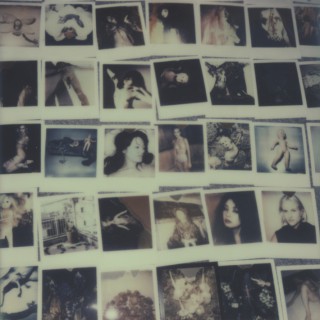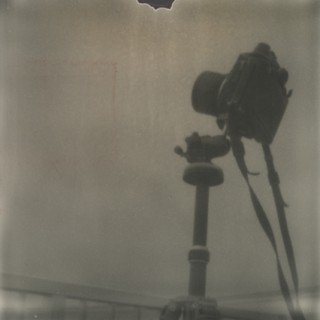写真は私である 1
荒木経惟の写真の原点は、本人も公言しているとおり、一九七一年に自らが編集し刊行した、一〇〇〇部限定の私家版『センチメンタルな旅』にある。本書に掲載されている宣言文は、この本の冒頭に直筆を転写・印刷されたのが初出であり、荒木の実質的な「私写真」宣言といえる。『センチメンタルな旅』は、同年に結婚した、妻・陽子との新婚行をたどる赤裸裸なモノクロームの記録であり、日本の写真界に、センセーションを巻き起こした。以降、現在にいたるまで、荒木の写真家としてのトポロジーは、徹底的に、「私=写真」という概念に貫かれている。
結婚からおよそ二十年後、子宮肉腫によって、陽子は生涯の幕を閉じる。結婚生活を通じて撮られた数多くの写真には、新居(世田谷・豪徳寺のマンションの一室)でスタートした二人の生活の節々、幸福の絶頂を彷彿させる爛漫な笑顔、愛猫・チロと戯れる姿、夫婦水入らずの旅、徐々にさまざまな被写体に浸食されていく広いバルコニーなどがちりばめられ、彼女の発病により歯車を狂わされ、終には、あふれる花に埋もれた彼女の棺のなかの顔へ(『冬の旅』)、と向かっていく。葬式で荒木が抱える遺影におさめられた、華やかなポートレートもまた、荒木の撮影によるものだ。
陽子が、抜きん出て美しい女性であったことはまぎれもない事実だが、その内側から放出される目映さが、荒木の間断ないシャッター音との化学反応により、増幅されたこともまた、彼の写真に明らかである。荒木は常々、「写真は被写体と時間がつくるもの」と述べている。「空間を撮ってるんじゃない、時を撮っている。時をフレーミングしているんだ」とも。
荒木経惟は、一九四〇年に、東京の下町、台東区三ノ輪で、下駄職人である父・長太郎、母・きんの長男として生を享けた。江戸期の新吉原のお膝元、遊女たちの無縁仏が多数眠る浄観寺の敷地が幼少時代の遊び場だった。写真を趣味とする父から、多大な影響を受ける。都立上野高校から千葉大工学部・写真学科に進む。大学時代にネアレアリズムに感化され、卒業制作として、映画「さっちん」を制作。卒業年である六三年、大手広告代理店である電通にカメラマンとして入社。その間に、六〇年代、戦後から復興へのエネルギーに漲る時代を背景に、下町の子供たちを撮りおろした写真「さっちん」によって、第一回太陽賞受賞。
荒木は電通時代、広告カメラマンとしても、確かな力量を発揮している。一方で、社のスタジオを自在に使用できる権利を駆使、秘書職を務め、のちの七二年に妻となる青木陽子らをモデルとした女性写真や、街を歩く市井の人々の膨大な量のスナップなど、みずからの作品を精力的に撮影した。
夫にさきだたれた母が七四年に没し、喪主を勤める。「こんなにいい顔の母を見たのは、初めてのような気がした。私は凝視した。そこには、現実を超えた現物があった。まさしく、死景であった」。
The origin of Araki’s photography lies, as he openly declares, in Sentimental Journey, which he edited and privately published in a limited edition of one thousand copies. Araki’s substantial declaration “I-photography (shi-shashin)” originally appeared on the first page of the photobook where Araki’s hand-written text was transcribed and printed. Sentimental Journey, which created a sensation in the Japanese photography world, is a bold, monochromatic record of honeymooning with his wife Yoko whom he married the same year of the publication. From that time onward, his trajectory as a photographer has been thoroughly supported by his concept of the equivalency between “the self (I)” and “photography.”
About two decades after they wed, Yoko passed away due to uterine cancer. Numerous photographs taken throughout their married life discursively document the following: scenes of starting life together in their new home (an apartment in Gōtokuji, Setagaya-ward in Tokyo), a bright smile that reminds us of Araki and Yoko in a state of euphoria, playful moments with their pet cat Chiro, intimate trips taken by just the two of them, and a spacious balcony that was gradually overtaken by a variety of objects used in his photography. Ultimately, this series of photographs was derailed by Yoko’s disease and we see this turn of events in a photograph of her face in her coffin surrounded by a bunch of flowers (as in Winter Journey). Araki also shot a stunning portrait of Yoko that he held at her funeral.
It is an undeniable fact that Yoko was far and away a beautiful woman, and it is also clear that the brightness which radiated from within her was enhanced by the magical chemistry between her and shutter click of Araki’s tireless shooting. Araki has repeatedly mentioned, “photography is formulated by the subject and time.” He also states, “I am not shooting the space, but time. I am framing time.”
Araki was born in 1940 in Minowa, Taitō-ward in downtown Tokyo. He was the oldest son of father Chōtarō, a maker of traditional Japanese clogs, and mother Kin. During his childhood, the nearby Jōkanji temple was his playground, situated at the foot of Shin-Yoshiwara [red light district] and dating to the Edo period (1603-1868). The temple was the final resting place for many deceased prostitutes without any surviving relatives to pray for their souls. Araki was very influenced by his father, whose hobby was photography. Upon graduating Ueno Municipal High School, Araki went on to take photography courses in the department of engineering at Chiba University. During his university years, he was influenced by Italian Neorealism and made a film Satchin for his graduation project. In 1963, the year he graduated from university, he entered a major advertizing agency Dentsu, Inc. as a photographer. During his years at Dentsu, he won the first annual Taiyō (Sun) award for his series of photographs Satchin, in which he photographed children in 1960s downtown Tokyo, filled with the energy of post-war reconstruction.
During this Dentsu years, Araki also demonstrated his aptitude as a commercial photographer. However, he also took advantage of his autonomy and freely made use the agency’s photo studio, energetically creating his own works, These included photographs of female models such as Aoki Yoko, who worked as a secretary at Dentsu and became his wife in 1971, and a great number of photographs of common people walking in the street, among other works.
Araki’s mother, by then a widow, passed away in 1974 and Araki served as her chief mourner. Araki said, “I felt that I saw the best version of my mother’s face for the first time. There was an actual thing that went beyond reality. I exactly saw the landscape of death [shi-kei, a word coined by Araki].”
摄影为“私”是也 1
说起荒木经惟摄影作品的起始点,正如我以前提到过的,是1971年自行编辑出版、限量1000本的《感伤之旅》。本书刊登的宣言原文,最早也是出自那本作品集的序文,这实际上也可以称之为荒木经惟对于“私写真”的宣言。《感伤之旅》用赤裸裸的黑白影像记录下了1971年荒木与阳子的新婚旅行,并且引起了不小的轰动。从那以后一直到现在,荒木经惟作为摄影艺术家的地位就被确立了下来,并且在他的作品里自始至终贯穿着“私=写真”的概念。
结婚20年后,阳子被子宫瘤夺去了生命。在婚后生活的日子里,荒木经惟拍摄的绝大部分影像,都出自他们二人在寓所(东京世田谷豪德寺公寓)开始的婚后生活的点点滴滴,比如无比幸福灿烂的微笑,和爱猫奇洛嬉戏的身影,夫妇二人的旅行,被无数被摄体侵蚀的宽敞的阳台等等,直到阳子的病情把这一切幸福的光景都打破了,最后,阳子静静地趟在棺木里,面庞淹没在无数花海中(《冬之旅》)。在葬礼上,荒木经惟怀抱着的阳子那华贵雍容的遗容,也是荒木经惟在她生前留下的。
阳子出类拔萃的美丽是毋容置疑的。然而从她的内在所映衬出的魅力,通过不间断的快门声和一系列的化学反应得到了增强,并且清晰地反映在荒木的作品中。荒木经惟常常说:“照片是被摄体和时间组成的。……我们拍摄的不是空间,是时间。我们在框取的其实是时间啊。”
荒木经惟,1940年作为长子出生于东京台东区三轮的一个普通市井家庭。父亲长太郎是位制作木屐的匠人。新吉原附近江户时期的净观寺成了他幼年玩耍的地方,据说那里葬着许多生前无亲无故的艺妓。他的父亲把摄影当成兴趣,这也深深影响了荒木经惟。他从都里上野高校升入千叶大学工学部摄影学科,在大学期间受到意大利新现实主义影响,在大学的毕业制作中创作了电影《阿幸》。1963年毕业当年,便进入电通广告公司成为了一名摄影师。在20世纪60年代日本战后社会复兴这一热火朝天的大背景下,他拍摄的以市井儿童为主题的摄影作品《阿幸》一举获得了首届太阳奖。
荒木在电通公司担任广告摄影师时,也着实发挥了他的能力。一方面他有自由使用公司摄影棚的权利,做过秘书之类的文职,拍过很多女模特的摄影作品,其中就有后来1972年成为他的妻子的青木阳子,漫步于市井街道、抓拍大量人物等等,荒木经惟把精力投入到所有这些个人的作品中。
丧夫的母亲在1974年也离开了人世,荒木主持了葬礼。“好像第一次看到母亲如此安详的面容,我凝视了许久。我看到了超越现实的东西,那正是母亲的“死景”。

